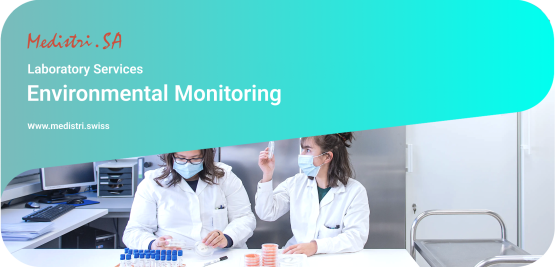(Download: Environmental Monitoring in PDF by Medistri)
Environmental monitoring is a crucial process that helps to assess the impact of human activities on the environment and take steps to minimize any negative effects. Failure to conduct environmental monitoring can result in a lack of understanding of the environmental impact of an organization’s activities, leading to potential harm to the natural environment and human health. Without proper monitoring, it can be difficult to ensure compliance with environmental laws and regulations, and to identify and mitigate risks. In short, not conducting environmental monitoring can have serious consequences for both the environment and society as a whole.
Environmental Monitoring refers to the tools and techniques designed to observe an environment, characterize its quality, and establish environmental parameters, for the purpose of accurately quantifying the impact an activity has on an environment. Results are gathered, analyzed statistically, and then published in a risk assessment and environmental monitoring and impact assessment report.
The main objective of environmental monitoring is to manage and minimize the impact an organization’s activities have on an environment, either to ensure compliance with laws and regulations or to mitigate risks of harmful effects on the natural environment and protect the health of human beings.
Environmental monitoring products and environmental monitoring software, such as Environmental Data Management Systems (EDMS), facilitate the implementation and monitoring of environmental monitoring and assessment programs, which includes a central data management hub, automated environmental monitoring alerts, compliance checking, validation, quality control, and generation of reports on dataset comparisons.
Because patient safety matters, the manufacture of pharmaceutical products is performed under strictly controlled conditions. Microbial monitoring is an important part of GMP regulatory compliance, used to prove that the manufacturing process is under control, especially in aseptic production.
The risk-based implementation of sampling plans, as well as the subsequent trend analysis of monitoring results, helps to detect deviations from qualified status, prepare root cause analysis, and follow up with appropriate corrective action and preventive action (CAPA).
According to the draft of the GMP Annex 1 2020 version, the Environmental Monitoring program must be part of the Contamination Control Strategy (CCS) and is typically comprised of:
- Non-viable particles Environmental Monitoring.
- Viable particles Environmental and Personnel Monitoring.
- Aseptic Process Simulation (for aseptically manufactured products only).
When talking about the viable particles in Environmental Monitoring, the following methods are normally used:
- Settle plates.
- Volumetric air sampling.
- Contact plates.
- Swabs.
Due to the nature of the sampling methods, even after having designed a very robust program, using a risk-based approach to define sampling locations, frequencies, sampling methods, etc., the information provided by the program will be limited and it will not be very valuable if used as a snapshot of the contamination in the area at a specific moment.
Medistri's in-house laboratory is a full-service contract laboratory, specialised in microbiology, analytical, bioanalytical chemistry & cell biology services, custom synthesis, and R&D. Our laboratory works according to ISO 17025 (current version) and is accredited since 2008 by the Swiss Accreditation Service (SAS). All testing can be performed according to European or US pharmacopeias.
🎯 To learn more about Medistri’s Environmental Monitoring, visit on our website here or directly contact our team at contact@medistri.swiss.
- The Medistri Team
#Medistri
